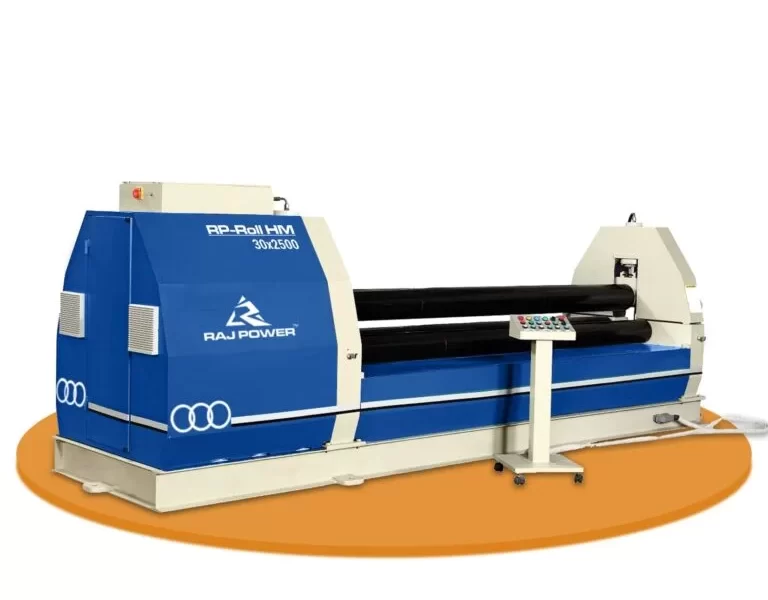
4 Roll Plate Rolling Machine
A 4 roll rolling machine is used to bend or roll metal plates into cone or cylindrical shapes. It is also called a four-roll plate bending machine or a 4 roll rolling machine. It works based on mechanical manipulation and material deformation. The machine contains four rolls: two more giant rolls at the bottom are used to push the plate, while two smaller rolls at the top are used to put on pressure and bend the plate. Compared to conventional three-roll machines, this design has many benefits, including better precision and a lower chance of deformation.
Let’s have a look at the general operation and basic principles of a four-roll plate rolling machine:
Working Principle of 4 Roll Rolling Machine:
Initial Positioning:
The operator places the metal plate between the top and bottom rolls to start the operation. The side rolls are pre-positioned for the final product’s desired curvature.
Pre-Bending:
Pressure is applied downward to the metal plate by the top roll, also called the bending roll. The plate is subjected to simultaneous lateral pressure from the side rollers, also known as pinch or idler rolls. This pre-bending process, which results in a slight curvature over the length of the plate, is started by the interaction of vertical and horizontal pressures.
Roll Adjustment:
The side rolls are adjusted to obtain the required bending radius. With this adjustment, the metal’s curvature can be precisely controlled, ensuring accuracy in the final item.
Final Bending:
The machine performs the final bending operation after the plate has been properly positioned and the rolls have been appropriately adjusted. The top roll applies constant pressure to the metal, while the side rolls apply lateral pressure. As a result, a smoothly bent metal sheet with the desired curvature is produced.
Operation of 4 Roll Plate Rolling Machines:
Material Preparation:
Make sure the metal plate is clean, straight, and of the right size before running the machine. It takes proper material preparation to produce precise and highly effective bends.
Machine Setup:
Configure the four-roll plate rolling machine according to the job specifications. Depending on the material thickness and required bending radius, modify the side roll positions and the space between them.
Material Loading:
Carefully slide the metal plate between the upper and lower rolls. Make sure the plate is securely held in place and centred.
Pre-Bending:
Turn on the machine to start the pre-bending procedure. To get the correct curvature in the first step, keep an eye on the alignment of the plate and adjust the side rolls as necessary.
Roll Adjustment:
Adjust the rolls to obtain the exact bending radius required for the final item. This step requires close attention to detail to guarantee accuracy in the bending process.
Final Bending:
Turn on the machine to perform the last bending operation. The 4-roll design produces a superior curved metal sheet through a more controlled and seamless bending process.
Quality Check:
Check the finished product for flaws or defects after the bending process is complete. If necessary, change the machine’s settings and try the operation again.
Conclusion:
The working principle and operation of the 4-roll plate rolling machine combine precision and versatility, making it a valuable tool in metal fabrication. Operators can harness the full potential of this machine by understanding the intricacies of the process, producing accurately bent metal sheets for a wide range of applications in various industries.
Rajesh Machines specializes in manufacturing rolling machines, offering a range that includes 3 roll mechanical rolling machines, 3 roll hydraulic rolling machines, and 4 roll hydraulic rolling machines.
